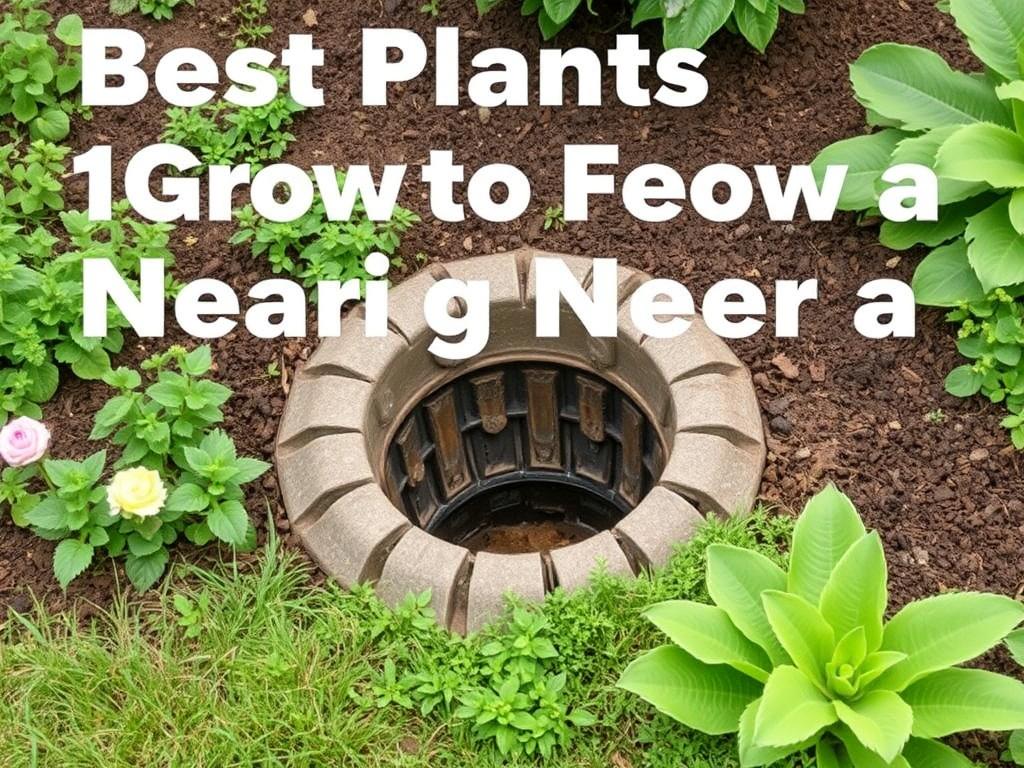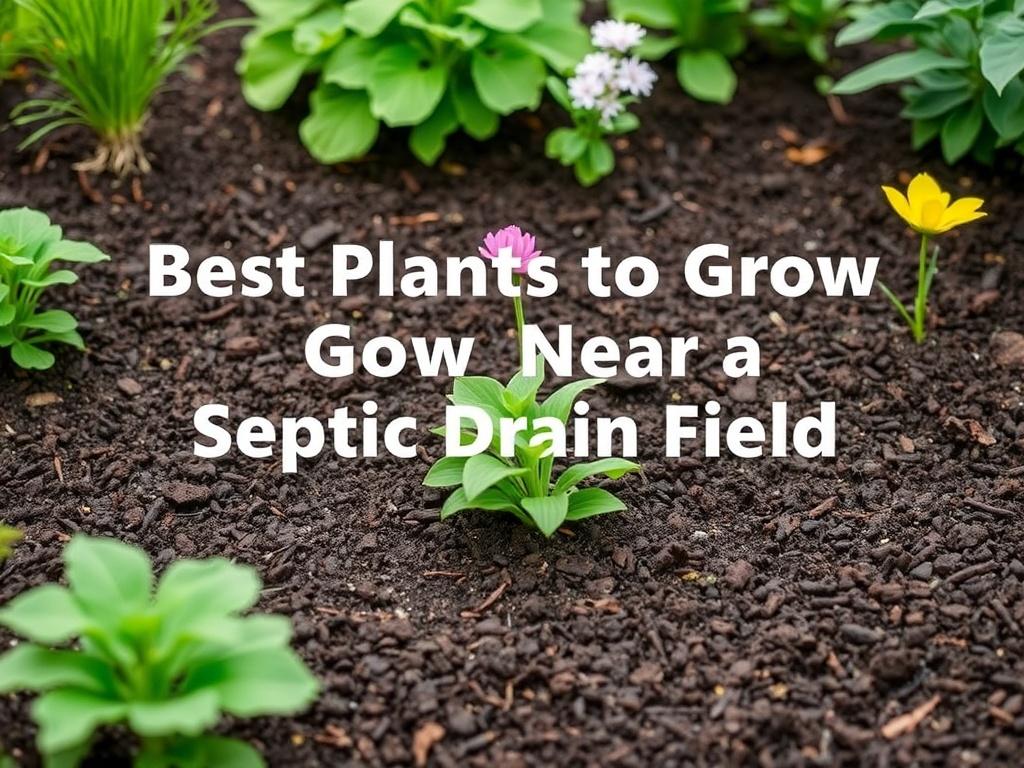A septic drain field is an essential part of a home’s wastewater system, quietly working underground to treat and disperse effluent safely back into the soil. While it’s out of sight, it shouldn’t be out of mind—especially when it comes to what you plant near a septic drain field. Choosing the right plants can protect your system, prevent costly damage, and even enhance your yard’s overall appearance. But how do you choose the best plants to grow near a septic drain field? This guide will walk you through everything you need to know, including the types of plants to consider, which ones to avoid, and why specific selections make sense.
- Understanding the Septic Drain Field and Its Importance
- Why Plant Selection Matters Near Your Septic Drain Field
- Top Plants to Grow Near a Septic Drain Field
- 1. Grasses and Groundcovers
- 2. Flowering Perennials and Low Shrubs
- 3. Native Plants Adapted for Septic Field Conditions
- Plants to Avoid Near Septic Drain Fields
- Trees and Shrubs with Aggressive Root Systems
- Plants That Require Excessive Water or Fertilizer
- Tips for Planting and Maintaining Your Septic Drain Field
- Planting Guidelines
- Watering and Fertilizing Practices
- Additional Maintenance Tips
- Summary Table: Best Plants vs. Plants to Avoid Near Septic Drain Fields
- Conclusion
Understanding the Septic Drain Field and Its Importance
Before diving into the best plants to grow near a septic drain field, it’s important to understand what a septic drain field is and why it matters. A septic drain field, sometimes known as a leach field or soil absorption system, is an underground network of perforated pipes that dissipates treated wastewater from a septic tank into the ground. The soil naturally filters and treats the wastewater, removing harmful bacteria and nutrients before it reenters the groundwater.
Since the drain field is responsible for filtering and dispersing wastewater, it must remain undisturbed and function correctly. Damage to the drain field can lead to poor drainage, unpleasant odors, and expensive repairs. The soil quality and proximity of tree and plant roots are critical factors to consider because certain plants can damage or smother the system, while others actually benefit the soil and promote system health.
Why Plant Selection Matters Near Your Septic Drain Field
Planting near a septic drain field isn’t just about creating a beautiful yard—it’s about making smart choices that protect one of your home’s most vital systems. Root growth is a key concern: aggressive roots from certain trees and shrubs can penetrate and clog drain pipes, disrupting the flow of wastewater. On the other hand, some plants have shallow root systems that help stabilize the soil without threatening the septic lines. These plants can prevent soil erosion, aid in water absorption, and even help filter nutrients effectively.
The best plants to grow near a septic drain field often have non-invasive roots and don’t require excessive watering, fertilizer, or maintenance. By selecting the right plants, you reduce the risk of septic system failure while adding greenery that enhances your landscape.
Top Plants to Grow Near a Septic Drain Field
Choosing the right plants near a septic drain field requires knowing which plants have shallow roots, tolerate the soil conditions, and generally contribute to the system’s health. Here’s a detailed look at some of the best plants for this specific purpose:
1. Grasses and Groundcovers
Grasses and groundcovers are arguably the best choice for planting near septic drain fields. They have shallow roots, which means they won’t interfere with the septic lines below. Plus, they help hold the soil in place, absorbing rainwater and reducing erosion.
| Grass or Groundcover | Benefits | Maintenance Level |
|---|---|---|
| Fescue Grass | Drought-tolerant, deep green color, erosion control | Low |
| Bluegrass | Hardy, dense growth, good for cool climates | Medium |
| Clover (White Clover) | Fixes nitrogen, reduces fertilization needs | Low |
| Creeping Thyme | Fragrant, attracts pollinators, drought resistant | Low |
| Ajuga (Bugleweed) | Colorful foliage, shade tolerant | Low to Medium |
2. Flowering Perennials and Low Shrubs
Flowering perennials and small shrubs that have non-invasive root systems can thrive near septic drain fields without harming the underground pipes. They add color and texture to the landscape while keeping root depth shallow.
- Daylilies: Very hardy with shallow roots, perfect for adding bright colors.
- Hostas: Shade-loving perennials with minimal root spread, great under trees.
- Hydrangeas: These shrubs have fibrous root systems and tolerate moist soils, though watering should be moderate.
- Liriope: Sometimes called lilyturf, thrives in sun or shade and has non-invasive roots.
- Boxwood: Compact shrubs with shallow roots, often used for hedges near septic areas.
3. Native Plants Adapted for Septic Field Conditions
Native plants are a smart choice when planning your septic drain field landscape. Because they’re adapted to the local environment, they are low-maintenance, drought-resistant, and less invasive. Plus, native plants support the local ecosystem by attracting beneficial insects and birds.
Some excellent native options include:
- Black-eyed Susan: A resilient perennial with shallow roots and bright yellow flowers.
- Switchgrass: A native grass with deep roots that stabilize soil but doesn’t threaten septic systems due to its growth habit.
- Wild Indigo: A flowering perennial known for nitrogen fixation and soil stabilization.
- Virginia Bluebells: Spring wildflowers with low root spread and beautiful blooms.
Plants to Avoid Near Septic Drain Fields

Knowing what to plant is only half the battle. Equally important is understanding what to avoid. Some plants look lovely but can cause serious damage to your septic drain field because of their aggressive or deep root systems.
Trees and Shrubs with Aggressive Root Systems
Trees and shrubs with deep, invasive roots can penetrate drain pipes and cause blockages, leading to system failure. These roots actively seek out moisture and nutrients found in septic drain fields, which can cause costly problems.
| Tree/Shrub | Root Characteristics | Why Avoid |
|---|---|---|
| Willows | Rapid, aggressive roots | Roots penetrate pipes stirring clogs |
| Poplars | Extensive root systems seeking water | Roots can disrupt drain field infrastructure |
| Maple Trees | Deep, wide root spread | Potential to invade pipes and soil system |
| Sweetgum | Strong roots that spread widely | Disrupts soil structure and pipe integrity |
| Birch Trees | Extensive shallow roots | Roots invade drain field trenches |
Plants That Require Excessive Water or Fertilizer
Avoid planting vegetation that demands constant watering or fertilization near your drain field. Excess water can overload the system, and fertilizers may disrupt the delicate balance of bacteria that treat wastewater underground.
- Turf grass varieties requiring frequent watering or fertilization.
- Vegetable gardens, which often need more nutrients and watering than the system can handle.
- Large annual flowers that require repeated fertilization.
Tips for Planting and Maintaining Your Septic Drain Field

Planting near a septic drain field requires more than just choosing the right species. Proper care and maintenance will ensure both your plants and septic system live harmoniously.
Planting Guidelines
- Maintain a safe distance: Avoid planting large trees and shrubs closer than 10 feet from the drain field.
- Focus on shallow-rooted plants: Plants with root systems that stay within the top 12-18 inches of soil are less likely to cause damage.
- Use mulch carefully: Mulch helps retain moisture around plants but don’t pile it too thickly on your drain field.
- Check soil conditions: Plants should match the soil type (clay, sandy, loamy) of your drain field area to thrive.
Watering and Fertilizing Practices
Most plants appropriate for septic drain fields require minimal watering once established. Here’s what you should keep in mind:
- Use drought-tolerant plants to reduce watering needs.
- Water deeply but infrequently to encourage deep root growth above septic pipes.
- Limit fertilization near the drain field to prevent nutrient buildup in the soil, which can affect the bacterial action in the septic system.
Additional Maintenance Tips
It’s important to monitor your septic drain field regularly. Avoid parking or heavy foot traffic on the area, as compaction can interfere with soil absorption. Rake leaves and plant debris gently to avoid tearing the fragile soil structure. If you need to make repairs or improvements near the drain field, always consult a septic professional to avoid accidental damage.
Summary Table: Best Plants vs. Plants to Avoid Near Septic Drain Fields
| Category | Recommended Plants | Plants to Avoid |
|---|---|---|
| Grasses & Groundcovers | Fescue, Bluegrass, Clover, Creeping Thyme, Ajuga | Turfgrass requiring heavy maintenance |
| Flowering Perennials & Shrubs | Daylilies, Hostas, Hydrangeas, Liriope, Boxwood | Vegetables requiring fertigation |
| Trees | Small ornamental trees with shallow roots | Willows, Poplars, Maples, Sweetgum, Birch |
Conclusion
Selecting the best plants to grow near a septic drain field is a crucial step in protecting your home’s sanitation system while enhancing your yard’s natural beauty. By choosing shallow-rooted grasses, groundcovers, perennials, and native plants that thrive in your local soil and climate, you’ll avoid costly damage caused by intrusive roots and excessive watering. Equally important is steering clear of aggressive trees and moisture-loving vegetation that could disrupt the septic system’s delicate balance. With thoughtful planting and maintenance, your septic drain field can remain healthy and efficient for years to come, allowing you to enjoy both a beautiful lawn and peace of mind. Whether you’re landscaping a new drain field or revitalizing an existing one, these plant choices will help you create a sustainable, attractive, and functional outdoor space.
Помогла вам статья?






